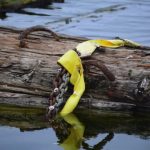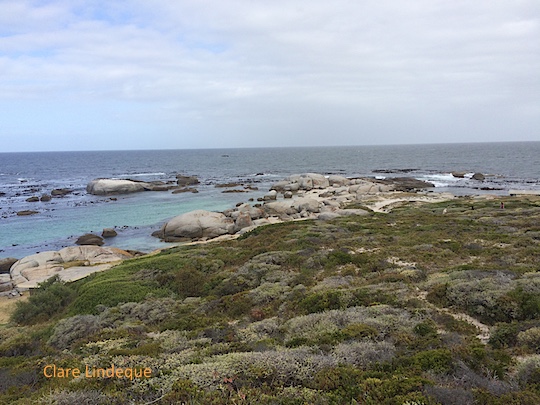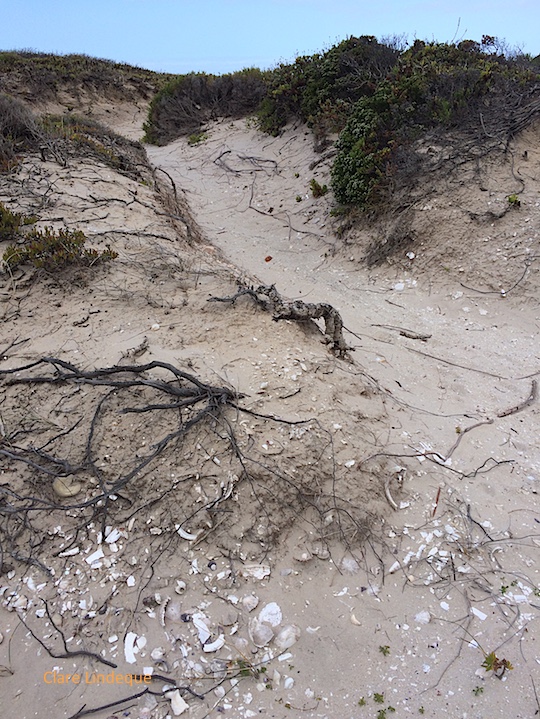Until recently, the last time I specifically went looking for the wreck of the Commodore II was in December last year, when I went to Milnerton lagoon beach to show visiting family the beautiful view of Table Mountain. At that time tides and waves had moved the wreck further away from the lagoon mouth, and she was lying on the sand at a spot that would be partially submerged at high tide.
There has been some community discussion about the future of the wreck since late last year, but nothing changed until winter arrived.

Next time I went to look for the wreck, just after the Cape storm of 7 June this year, I couldn’t find it. A waiter at the Wang Thai restaurant on the beach told me he’d seen it all the way up at the old Wood Bridge at Woodbridge Island, and that people were removing pieces of the wreck and carrying them away. The storm surge had actually lodged the wreck partially under the old Wood Bridge (a sensitive National Monument constructed in 1901), and there was the potential for it to cause damage. There’s a picture of the wreck in this position on page 28 of this document (pdf).

A few weeks ago Gerhard Beukes, a Milnerton resident, messaged me to say that he had secured the wreck about half way down the lagoon. It had been winched free of the Wood Bridge by Koos Retief, Area Biodiversity Manager at Table Bay Nature Reserve, and had floated back down the lagoon to settle on a sandbank near Gerhard’s home.
Gerhard estimates that the wreck weighs about 25 tons, and with considerable personal effort and some financial outlay he has attached it to the lagoon bank, resting on the sandy bottom in shallow water, with chains and heavy lifting straps. The chain is secured to bolts attached to metal pipes sunk deep into the bank.

The arrangement will prevent the wreck from washing around inside the lagoon and potentially injuring kayakers and other water users. It will also prevent it from washing out into Table Bay and becoming a semi-submerged shipping hazard, potentially lethal to vessels (something like the Seli 1 is when her buoy goes missing).

It’s also quite visible: if you walk or drive down Esplanade Street in Milnerton with Lagoon Beach behind you, you’ll come across the remains of the Commodore II next to the bank of the lagoon on your left. The wreck is over 60 years old, which means that under South African law it is protected and removing pieces of it is an offence. I hope that having many local residents’ eyes on the wreck will ensure it some measure of safety, even in the absence of any enforcement of the relevant laws.
How can you help?
To make sure the wreck does not come loose next time a large volume of water washes down the river and into the lagoon after heavy rains, it needs some further reinforcing in its current location. This could be done with a further 5 metre length of heavy duty chain, or (preferably) two loading slings, 25mm steel cable with rings or eyes on both ends. The harness needs to be capable of holding 25 tons of wood in place even under strain, and are necessary to completely stabilise the wreck.
If you have such items lying around unused at home, or are sufficiently moved and interested by the wonderful history of the Commodore II to make a donation, please comment on this post or use the contact form here, and I’ll connect you with Gerhard, the current guardian of the Commodore II.
Are you interested in shipwrecks that you can visit without going underwater? Read more about Cape Town’s visible shipwrecks here.































